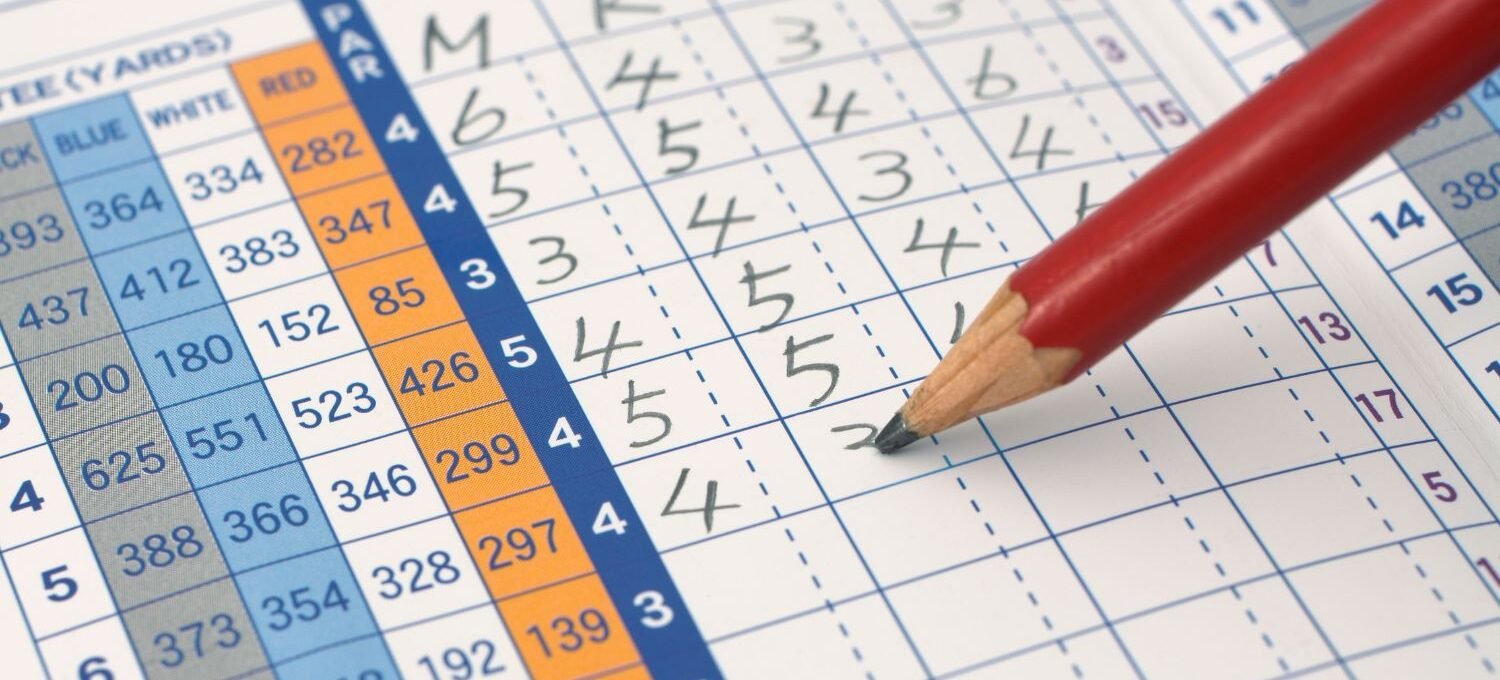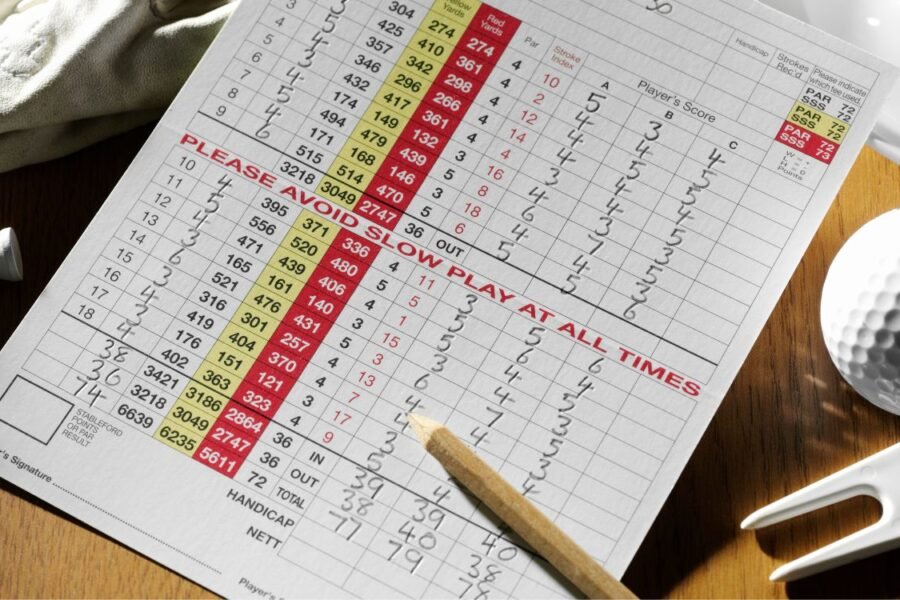Golf can seem like a maze of rules and numbers for beginners, but the golf handicap system is one of the best tools for leveling the playing field. It’s what makes it possible for a weekend golfer to compete with seasoned pros, making every round exciting and competitive.
Let’s break it down step by step so you can understand and start using the golf handicap system to your advantage.
What Is a Golf Handicap?
A golf handicap is a numerical measure of a golfer’s skill level, typically ranging from 0 (expert) to 54 (beginner).
The handicap system allows golfers of all abilities to compete fairly by assigning additional strokes based on their skill level. For example:
• If your handicap is 40, you’ll receive 40 extra strokes over the course of a round.
• On an 18-hole course with a par of 72, your target score to match par would be 112 (72 + 40).
This system ensures everyone has a fair chance to win, making golf a sport for players of all skill levels.
Golf is a game of endless challenges, but the handicap system ensures that everyone, no matter their skill level, has a fair shot at victory
How to Get a Golf Handicap?
Wondering how to get your first golf handicap? Follow these steps:
1. Join a Golf Club or Association: Many clubs and governing bodies offer official handicap services.
2. Play and Submit Scorecards: Play at least 3–5 rounds and record your scores. These scores will be used to calculate your handicap.
3. Use Handicap Apps: Apps like GHIN or MyScorecard make it easy to track and maintain your handicap.
How Does a Golf Handicap Work?
The Basics of a Handicap
Your golf handicap is essentially a reflection of your potential ability on the golf course. It estimates how many strokes above or below par you are likely to score on an average round, taking into account the difficulty of the course.
For example:
• A golfer with a handicap of 10 is expected to play 10 strokes over par on a standard course.
• A golfer with a handicap of 20 is expected to play 20 strokes over par.
This allows golfers with higher handicaps to compete against more skilled players by giving them additional strokes to level the playing field.
Course Ratings Vs Slope Ratings
The course rating and slope rating are critical to how a handicap works.
The course rating is the expected score for a scratch golfer playing a specific course. For example, if a course has a par of 72 and a course rating of 71.2, it’s slightly easier than a standard course.
The slope rating is a measure of the course’s difficulty for an average golfer compared to a scratch golfer. It ranges from 55 (easier courses) to 155 (most difficult courses). The average slope rating is 113, which serves as the baseline for calculating handicaps.
These two ratings are used to adjust your handicap for the specific course you’re playing.

Course Handicap vs Playing Handicap
Understanding the difference between course handicap and playing handicap is essential for competitive golf.
• Course Handicap: Adjusts your handicap based on the course’s difficulty (using course and slope ratings).
• Playing Handicap: Further adjusts your course handicap for specific formats like Stableford or match play.
How to Calculate Course Handicap:
Use this formula to calculate your course handicap:
Course Handicap = Handicap Index × (Slope Rating / 113) + (Course Rating – Par)
This number tells you how many strokes you can apply for that specific course.
Example:
• Handicap Index: 35.0
• Course Slope Rating: 130
• Course Rating: 72
• Par: 72
Course Handicap Calculation:
Course Handicap = Handicap Index × (Slope Rating ÷ 113) = 35 × (130 ÷ 113) = 40
The golfer gets 40 extra strokes for this course.
Playing Handicap Adjustment (e.g., Stableford with 95% allowance):
Playing Handicap = Course Handicap × 0.95 = 40 × 0.95 = 38
Course Handicap: 40 (used for casual rounds).
Playing Handicap: 38 (used for competitions with specific allowances).
What is the Maximum Handicap and Average Handicaps by Skill Level?
The maximum allowable handicap under the World Handicap System is 54.0 for both men and women.
Average Handicap by Skill Level
Handicaps can generally be categorized into three groups: low, mid, and high handicaps. Here’s a breakdown of what these ranges typically mean:
Low Handicap (0–10)
• Skill Level: Advanced golfers or highly skilled amateurs.
• Expected Performance: These players consistently shoot close to par or slightly above it.
Common Traits:
• Strong short game.
• Excellent course management.
• Drives and iron shots are precise and consistent.
Fun Fact: Scratch golfers (handicap of 0) can compete at a professional or near-professional level.
Mid Handicap (11–24)
• Skill Level: Intermediate golfers.
• Expected Performance: These players are capable of breaking 90 regularly but may occasionally have rounds in the 90s or low 100s.
Common Traits:
• Relatively consistent swings but with occasional errors.
• Average short game.
• Working on improving driving distance and accuracy.
Fun Fact: Most amateur golfers fall into this category.
High Handicap (25–54)
• Skill Level: Beginners or casual players.
• Expected Performance: These golfers typically score 100 or more on an 18-hole course.
Common Traits:
• Inconsistent swings and frequent penalties (e.g., lost balls, out-of-bounds shots).
• Struggling with short game, putting, and bunker shots.
• Often improving with practice and lessons.
Fun Fact: A handicap of 54 allows you to score up to 3 strokes over par on every hole and still remain competitive!
Click here to discover the one piece equipment that can easily lower your handicap.



How to Improve Your Golf Handicap
Improving your handicap is a rewarding challenge. Here are some tips:
1. Focus on Your Short Game: Around 65% of your strokes happen within 100 yards of the green. Practice putting and chipping regularly.
2. Play Consistently: The more rounds you record, the more accurate your handicap becomes.
3. Take Golf Lessons: A professional coach can help refine your swing and course management skills.
4. Learn Course Management: Make smarter decisions on the course to avoid unnecessary risks.
Common Questions About Golf Handicaps
What Is a Good Golf Handicap for Beginners?
A good handicap for beginners typically falls between 28 and 36. As you gain experience and practice, you can lower your handicap over time.
Can You Play Without a Handicap?
Yes! You don’t need a handicap to enjoy golf casually, but having one enhances the competitive and social aspects of the game.
How Often Should I Update My Handicap?
Your handicap should be updated after every round if possible, ensuring it accurately reflects your current skill level.
The golf handicap system is one of the game’s greatest equalizers, making it possible for players of all skill levels to enjoy golf together. By understanding how it works, you’ll not only improve your game but also open up opportunities to compete in tournaments and casual games alike.
Remember, lowering your handicap takes time, practice, and patience, but the journey is part of what makes golf so rewarding.
So, grab your clubs and start your journey toward improving your golf handicap today!




